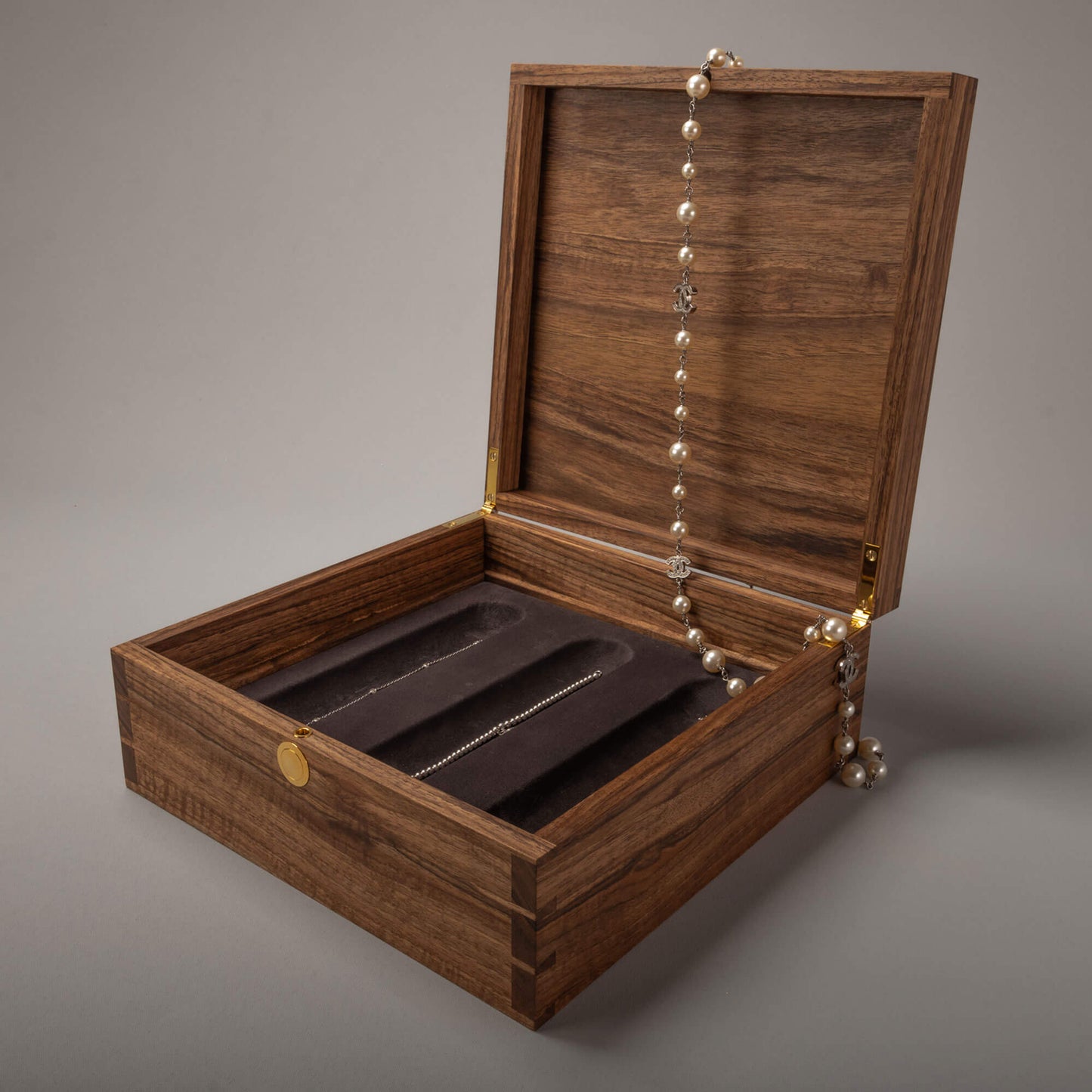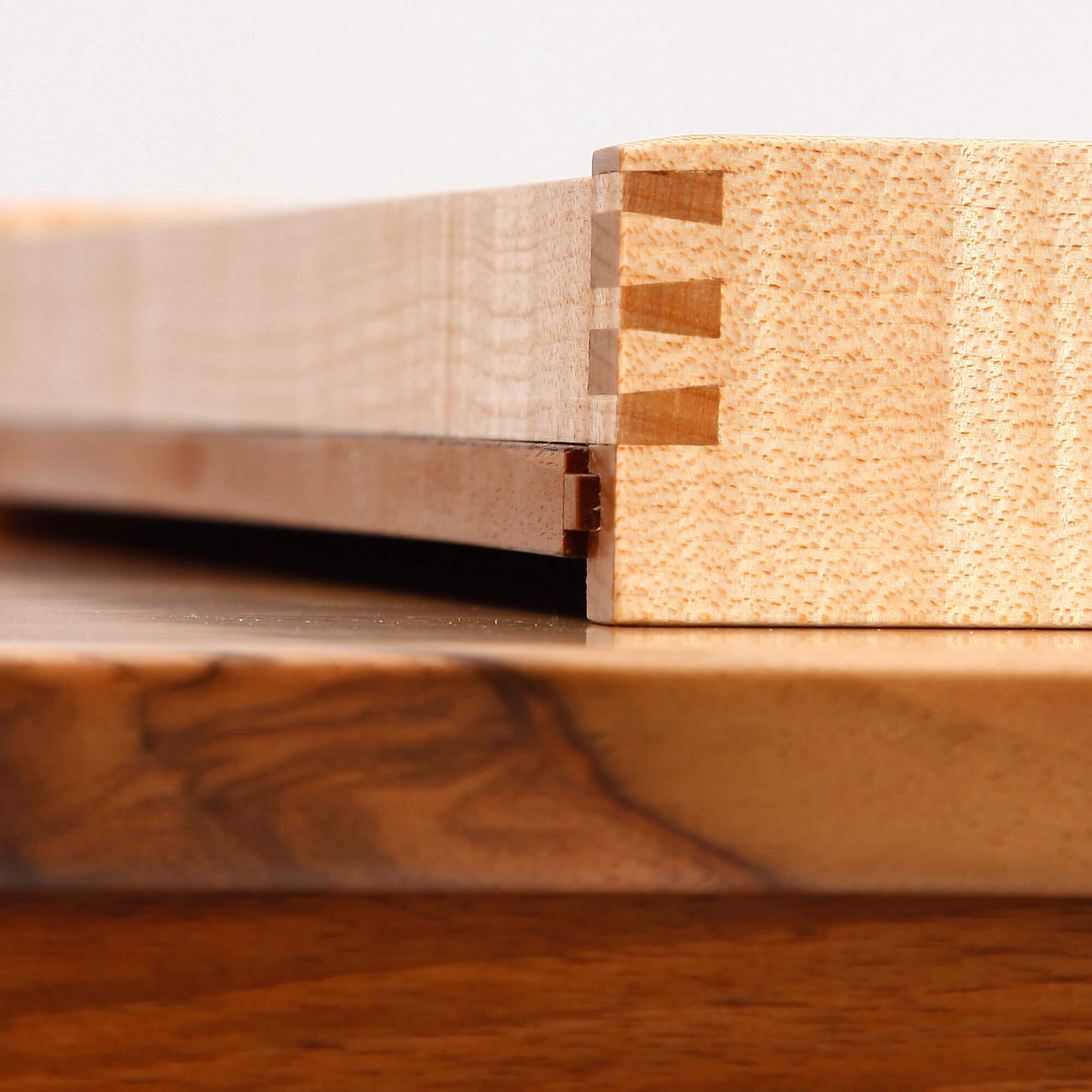
Embracing wood as a natural, versatile, and sustainable resource could help counteract environmental challenges and inspire a renewed connection to nature. Encouraging wider awareness of wood’s cultural and ecological significance could indeed lead to more thoughtful use and conservation of forests. Cherry and Walnut are featured in this blog.
Cherry
Cherry was selected when I began my first project and introduction to machining at the Williams & Cleal Furniture School in Somerset UK. We started with making an occasional table. It has since been gifted to my wife Sarah’s parents and takes pride of place in their Rossbeigh summer home.

Cherry has a striking red colour which matches its fruit. I think in many ways Cherry reflects my love of red, being from Cork and Munster, one can easily relate to the colour red! While we associate red with anger, its warm hues that shine through in the wood grain make it a very comforting colour to have in the home.
Cherry wood has a warmth that only deepens with age. Its reddish-brown tones mature over time, developing a rich patina that enhances its beauty, and the subtle grain patterns bring a lovely visual depth. Cherry’s timeless elegance makes it a classic for furniture and cabinetry, especially when the wood’s natural sheen gets a chance to shine.
Cherry wood is also a dream to work with—easily carved and shaped. It’s forgiving, although it requires sharp tools to avoid burn marks. When polished, it has a soft, lustrous finish that feels luxurious. With moderate hardness, Cherry is durable enough for pieces that get steady use, like dining tables or cabinets. Its availability in North America makes it affordable, but top-quality pieces with intense colour can fetch a premium.
Cherry has been a staple of American furniture-making since the colonial era.
Shaker and Colonial Furniture: Shaker craftsmen loved Cherry’s smooth grain and warmth, using it for simple yet beautiful pieces that can still be found in museums today.
Chippendale’s Work: In the 18th century, English cabinetmaker Thomas Chippendale occasionally used Cherry in his ornate pieces for the American colonies, especially when mahogany wasn’t available.
American Windsor Chairs: Early American Windsor chairs, known for their elegance and durability, were often crafted from Cherry and are now treasured antiques.
Walnut
Walnut for me reflects the quintessential style and design of English Furniture and was often used in my pieces while at the Williams & Cleal Furniture School in Somerset. Nearly every student was working on a piece of furniture using Walnut on a weekly basis. I was introduced to Walnut in the box making project, which later became Maggie’s Pokémon/Keepsake box, and it now features in almost all my box designs.

I really enjoyed using Walnut in Sarah’s Writing Table (images below). I love the way it transitions from the outer core to the sap edges. This is probably hated by many people, but I love this playful nature and celebrate it. It’s a wood which symbolises clarity and focus, both qualities I feel are important to try and capture in a handcrafted writing table.


Walnut is the epitome of luxury with its dark, rich brown tones and hints of purple, making it a favourite for creating furniture with depth and character. The straight grain sometimes surprises with curls or burls, adding natural flair to each piece. Its slightly coarse texture and dark colour make it a striking contrast wood in fine woodworking.
With a good hardness level and a Janka rating around 1,010, Walnut is built for high-quality, heirloom pieces that last. It takes a bit more effort to carve than Cherry, but the results are worth it. Walnut sands and polishes beautifully, leaving a smooth finish that holds up over time. Its popularity and scarcity contribute to its high price, especially for uniquely figured pieces.
Walnut’s legacy in fine furniture is long-standing, especially for high-end, durable pieces.
Chippendale and Queen Anne Styles: Walnut was a go-to in the 18th century for luxury furniture styles like Chippendale and Queen Anne, with their graceful curves and intricate detailing.
Victorian Writing Desks: Victorian-era Walnut desks often featured intricate inlays and carvings, a testament to Walnut’s ability to hold fine detail.
George Nakashima’s Modern Work: Mid-20th century craftsman George Nakashima used Walnut in his iconic “Live Edge” tables, showcasing the wood’s natural beauty in a way that’s still influential in modern design.
The Walnut tree has many symbolic meanings, including:
Wisdom and protection: The Walnut tree has been associated with wisdom and protection for centuries.
Fertility and transformation: The Walnut tree is also associated with fertility and transformation.
Abundance and nourishment: The Walnut tree's role as a provider is reflected in its association with abundance and nourishment.
Intelligence, knowledge, and inspiration: Walnuts are associated with intelligence, knowledge, and inspiration.
Clarity and focus: Some Native American tribes believed the Walnut tree symbolised clarity and focus.
Relationship with nature: The poem also explores the relationship between humans and nature, and how agriculture can create a deep bond between the two.
Duality: The Walnut tree can also represent duality, with the tree itself being feared as a sign of ill omen and a favourite haunt of witches.
The Walnut tree's genus, Juglans, comes from Roman mythology. The word Juglans is thought to come from Jovis glans, which means ‘Jupiter's acorn’ or ‘Jupiter's nut’. The Romans associated the Walnut tree with Jupiter, the king of the gods.

